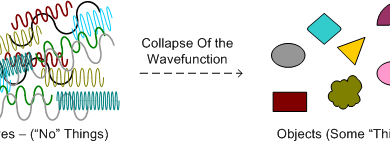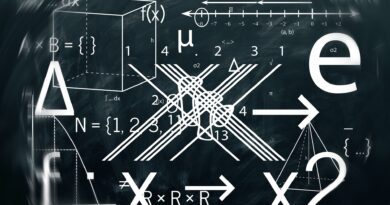Taming the butterfly effect
Luboš Motl, March 05, 2015
The butterfly effect is a defining effect of chaos theory. As Edward Lorenz said, the flapping of a butterfly’s wings in Beijing is needed to decide whether a hurricane is created and lands in New Orleans a few weeks later. (And it is not, as the porn gurus in the IPCC claim, because of the CO2 that the butterfly exhales and that leads to a climate cataclysm.)

Is that true? There are many other butterflies and effects that help to decide but in general, it is often true: major events (hurricanes) are often strongly affected by very small perturbations of the initial state (butterfly).
How strong the dependence is and how quickly the sensitivity may grow with time? Three famous physicists just argued that there is an upper limit. In their fresh new hep-th paper
Juan Maldacena, Steve Shenker of Stanford, and Douglas Stanford of Shenker 😉 provide us with evidence in favor of a cute new inequality.
First, you should ask: How can we make these comments about beautiful butterflies quantitative? Won’t butterflies always be known for their beauty and chaos theory for its impressive but purely verbal proclamations? Well, there are simple ways to quantify it.
Represent the perturbation – of the butterfly – by the Hermitian operator \(V(0)\) at time \(t=0\). The properties of the hurricane are represented by a later measurement, at \(t\gt 0\), of another operator \(W(t)\).
The fact that the butterfly \(V(0)\) matters for \(W(t)\) is mathematically encoded by the nonzero commutator
\[ [W(t),V(0)] \neq 0. \] The commutator would vanish if the two operators were spacelike-separated, for example. In that case, relativity would prohibit any influence of \(V\) on \(W\). OK, how strong the influence is? How large is the commutator? You surely want to ignore the signs and the phases which is why you want to square the commutator before you take the expectation value
\[ C(t) = -\langle [W(t),V(0)]^2 \rangle \] The minus sign is there to make \(C(t)\) positive: note that the commutator of the two Hermitian operators is anti-Hermitian, and its square is therefore negatively definite. The bracket \(\langle\dots \rangle\) is the thermal expectation value at temperature \(T\),
\[ \langle \dots \rangle = \frac{ {\rm Tr}( \dots e^{-H/T} ) }{Z} \] OK, schematically, this measure of the influence, \(C(t)\), has the units of \(VWVW\), Volkswagen Volkswagen (or Voskovec, Werich, Voskovec, Werich). There are different ways to place the brackets around \(VWVW\) and it may happen that \(C(t)\) is comparable to
\[ C(t)\approx \langle VV \rangle \langle WW \rangle. \] It means that the commutator is «maximized». Note that this is the case for operators \(x,p\) in the Gaussian wave packets that saturate the uncertainty principle (minimize the uncertainty). For those operators, \([x,p]=i\hbar\) so \(C(t)\) would be \(\hbar^2\) while \(\langle x^2\rangle = x_0^2\) and \(\langle p^2 \rangle = p_0^2\). The product of the latter two is also \( (\hbar/m\omega)(m\omega \hbar) = \hbar^2 \). I omitted the authors’ factor of two in equation 1 because I don’t see it there; and because we are talking about parametric estimates and \(2\approx 1\) in this sense.
OK, let’s return to the time-dependent evolution. The influence of the flapping of the butterfly’s wings decreases by itself, \[ \langle V(t)V(0) \rangle\sim \exp(-t / t_d) \] and the half-time \(t_d\) (associated with the dissipation or the collision time) is expected to be comparable to the inverse temperature \(t_d \sim 1/T=\beta\). So the exponent above is \(-tT\). Now, to make the story short, Maldacena, Shenker, and Stanford conjecture that a similar exponential growth, not decrease, of the initial-stage size of the chaos-measuring commutator is at most \(2\pi\) times faster than that.
In other words, some difference \(F_d-F(t)\) which is a polished version of \(C(t)\) above will behave as
\[ F_d — F(t) = \epsilon \exp(+\lambda_L t) + \dots \] where the prefactor \(\lambda_L\) with the units of inverse time is called the Lyapunov exponent. Maldacena’s and pals’ key assertion is that
\[ {\Large \lambda_L \leq 2\pi T = \frac{2\pi}{\beta}.} \] So the «exponentially fast takeover by chaos» is at most \(2\pi\) times faster than the decrease due to the thermal dissipation etc.
If you worry that there’s too much chaos in the world around, this is good news for you. The rise of chaos can’t be too fast, at least if the temperature is low enough. At temperatures near absolute zero, chaos can only kick in very slowly – you would probably expect that.
They offer some motivation for that conjecture, especially one based on gauge theories, AdS/CFT, stringy and higher-derivative corrections to various actions, and a unitarity bound on the scattering amplitudes. And the middle portion of the paper boasts a near proof of their inequality whose essence seems to be highly mathematically robust although the connection with complex enough physical systems may hide some problems.
A technical detail I liked was that they considered operators located at various points of the thermal circle. Note that the circumference of this circle is \(\beta=1/T\) and they considered operators at \(t\pm i\beta/4\) and \(t\pm i\beta/2\) – at four points uniformly distributed along the circle.
They present these things as convenient choices but I believe that those points will ultimately play a much more fundamental role – operators extrapolated to places such as \(t\pm i\beta/2\) are everywhere in Papadodimas-Raju papers, among others – in the future conceptual understanding of the information, black hole interior, the emergence of spacetime, chaos, and other things.
My prophesy is that there will be some very natural, universal, and robust statements involving the extrapolation of operators to these points.
You may also view the result by Maldacena, Shenker, and Stanford as an example of a family of insights that link the periodic functions with the exponential ones. Dissipation and the rise of chaos are connected with the exponential rise or decrease in time. On the other hand, the thermal circle is periodic. Periodic and exponential functions differ by the extra \(i\) in the exponent. You may think that the functions \(\exp(at)\) and \(\exp(ibt)\) have very little to do with each other, they’re just mathematically similar but they’re «physically» very different things. But \(a,b\) may be extrapolated to imaginary or complex values which is why there exist analytical results that relate these functions.
Also, this new result is somewhat analogous to the AdS/CFT bounds on viscosity. I would even say that the «bound on chaos» is deeper and more interesting because its applicability is much more universal. It may be fair to say that this paper has been decoupled from any dependence on AdS/CFT, string theory, or quantum gravity. You may apply it to any (quantum) physical system. But it’s likely that without the experience with the string or quantum gravitational physical systems, this inequality wouldn’t have been found (or have some non-string theorists scooped them?).
No Heisenberg-Coulomb effect
By the way, I am happy to be able to endorse most of Sabine Hossenfelder’s comments about a (primarily German) media Blitz hyping the promised looming detection of the gravitational Casimir effect.
The Casimir effect of the electromagnetic field depends on having boundary conditions \(\phi={\rm const}\) at the surface of the conductor. This boundary condition follows from Ohm’s law, \(\vec j =\gamma \vec E\). Whenever there is an electric field inside the conductor, it makes charges carriers move, and they neutralize the electric field. At the end, there is \(\vec E = 0\) inside the metal which allows you to say that the electrostatic potential \(\phi={\rm const}\) in the metallic bulk (including the surface).
The Casimir effect is a force between two metallic plates that may be derived from the zero-point energy in the vacuum between the plates. Only modes going like \(\phi(z)\sim \sin \pi N z / L\) for \(N\in \mathbb{Z}\) and \(0\leq z \leq L\) are allowed in between the metals whose distance is \(L\), thanks to the boundary conditions, and their zero-point energy is proportional to \(\sum_{N=1}^\infty N^3=\zeta(-3)=+1/120\) (a fact analogous to \(1+2+3+\dots = -1/12\)) times \(1/L^3\) and other factors. The divergent part of the sum cancels against the zero-point energies that you would get in the vacuum without any constraints such as \(\phi={\rm const}\). For that reason, the attractive Casimir force per unit area \(F/A\) will be something like \(1/120L^4\), among some extra factors such as \(\pi\) and \(2\) – and \(\hbar\) and \(c\).
Now, nothing like the «metals» exists for the gravitational field. You can’t make the counterpart of charge carriers, the mass carriers, move in the opposite direction because the mass of anything is never negative. So even though the gravitational waves would experience the Casimir effect as well if there were analogous boundary conditions, it is a big If and you won’t be able to «fully» enforce such boundary conditions.
Real-world materials – whose density is nearly zero, relatively to the Planck density – may only «partly distort» the gravitational field’s boundary conditions, and that’s way too little for observable consequences. The gravitational force is extremely weak because \(G_N\) is so small. It means that any gravitational objects between very small objects are hard to measure. There just can’t be a measurable force due to a gravitational Casimir effect between two special «plates».
Now, the media Blitz is based on a new paper by James Quach which is pretty good. But it takes something as input, namely a 2009 paper by Minter and 2 pals that coined what they called the Heisenberg-Coulomb effect (the two famous physicists have nothing to do with this particular effect!).
Minter et al. claimed that in the presence of gravitational waves, the positively charged nuclei move along the geodesics but the negatively charged di-electron Cooper pairs are not allowed to do so, and huge discrepancies in the distribution of the positive and negative charges is therefore created which leads to a huge plasma-like effect and an insanely amplified impact of the gravitational wave.
This whole separation of the positive and negative charges is nonsense, as you would probably guess.
The separated positive and negative charges carry a huge energy and the energy conservation law guarantees that this won’t happen just because of some nearby low-energy-carrying gravitational wave. Just keep on describing the superconductor using the exact Schrödinger’s equation for many electrons and many nuclei if you get confused by the effective descriptions that sometimes simplify things for superconductors but that may confuse you when it comes to unusual questions. And indeed, things get confusing because the Cooper pairs aren’t «localized». But they’re made of electrons whose operators \(\hat x\) are still well-defined so any miraculous prediction based on the «non-localizability of the Cooper pairs» is bound to be wrong.
Of course that Schrödinger’s equation for the many electrons and many nuclei will guarantee a pretty much exact local cancellation of the charges (think about the expectation value of the charge density – but the vanishing is really a full approximate operator equation). If your superconductor-optimized effective equations for the Cooper pairs violate the local compensation of charges, then these effective equations are just wrong!
The right solution for a superconductor in the background of a gravitational wave must start with the environment – the Cooper pairs are moving in the background of the electrostatic and gravitational forces. As always, the former ones dominate while gravity is negligible. Whatever the spacetime geometry is, the charge density will be effectively neutralized in every region of the superconductor. The equations for the field creating/annihilating the Cooper pairs will be modified by the gravitational wave but the corrections will never violate the local compensation of the electric charge density.
So Hossenfelder is obviously right that no one will observe this «quantum gravitational» effect. No one will observe any other quantum gravitational effect that she and others have written lots of papers about, either, but you can’t expect her to be so much right. 😉


